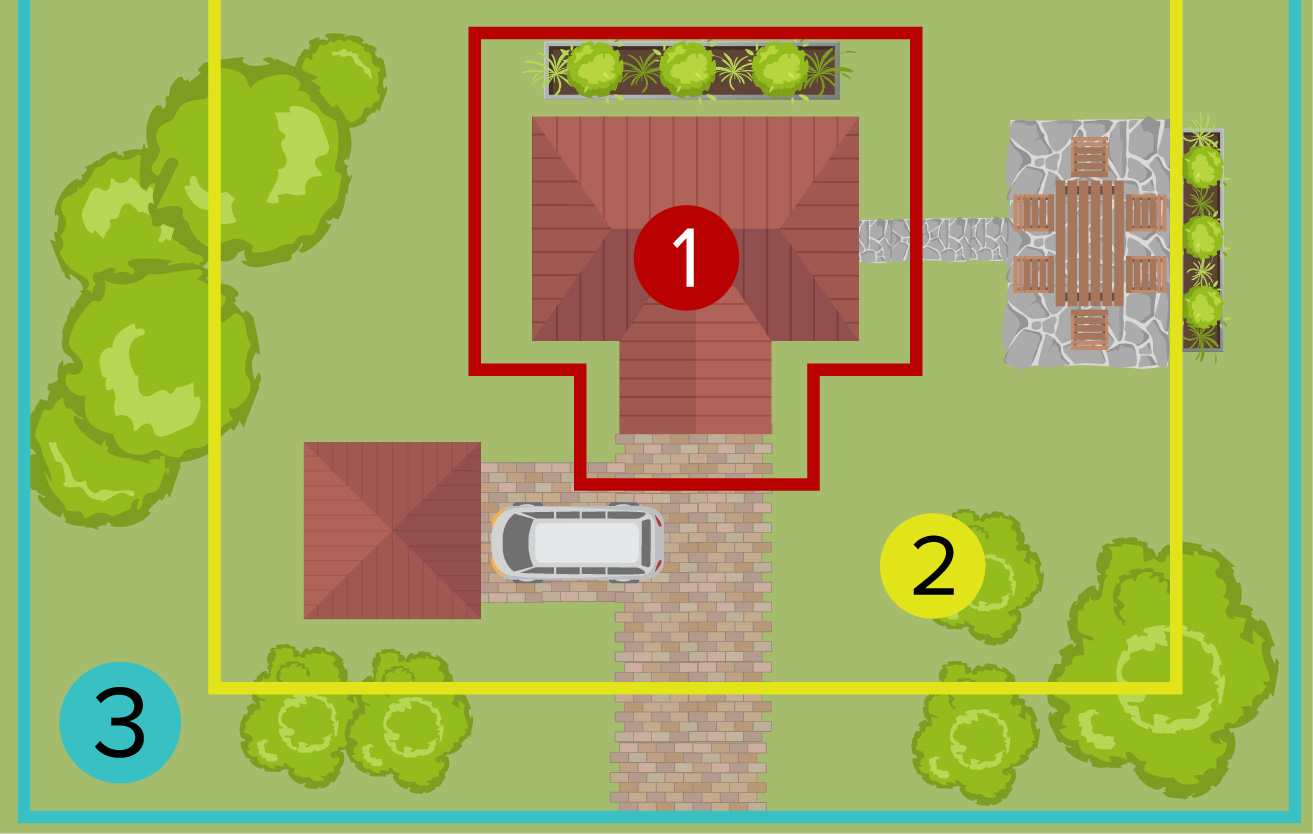Preparing Your Property for Wildfire
Retrofit Your Home for Wildfire

Retrofit Your Home for Wildfire
Here are 5 tips to make your home more fire resilient:
- Install a Class A roof. Your roof has the most surface area, therefore, will catch the most embers. Class A roofs are designed to minimize fire impacts. Class A roof materials include metal, tile and asphalt composition shingles. Keep roof clear of pine needles, leaves, branches and other vegetative debris.
- Remove all combustible materials within the first 5 feet around your home. Embers will collect in this zone. Remove woody plants, grasses, lumber, woodpiles, mulch and other combustible materials. Install gravel, rock or sand in this area instead.
- Cover all structure vents with 1/8-inch metal screen. Install 1/8-inch metal screen over all structure vents. 1/8-inch metal screen reduces the heat content of embers to reduce the likelihood of igniting combustible materials behind the vent.
- For wood or vinyl sided homes, consider replacing siding with fiber cement. Replace at least the lower foot of wood/vinyl siding with fiber cement, stone, brick or other non-combustible material.
- Replace wood decks with less flammable materials such as concrete, stone, fire-treated lumber or plastic composite decking.
Prepare Your Home Ignition Zone

Prepare Your Home Ignition Zone
Your Home Ignition Zone includes your home and at least a 100-foot area around your home. Reduce vegetation, debris and other combustibles within this area by starting closest to structures and work out from there.
- Immediate Zone: 0 to 5 feet from your home
- Intermediate Zone: 5 to 30 feet
- Extended Zone: 30 to 100 feet
Take action within each of these zones around all structures to reduce your wildfire risk.
Ensure you receive NorthWestern Energy outage alerts
Sign Up to Receive Local Emergency Alerts
If available, sign-up for emergency alerts issued through your county’s emergency management agency, sheriff’s office, and/or fire department. These are free localized alerts and one of the primary ways you would be notified for evacuations. Contact your local emergency service agency and learn more about what’s available in your county.
Wildfire Evacuation Checklist
When evacuating from wildfires, it’s crucial to stay calm and follow safety measures to protect yourself and your loved ones. Here are the five most important things to do:
Follow evacuation orders: Listen to authorities and evacuate immediately when instructed. These orders are issued for your safety and based on the fire's movement.
Gather essential supplies: Bring important documents, medications, clothing, food, water, a flashlight, and your phone. If possible, pack a bag with essentials for at least 72 hours.
Create a family plan: Ensure everyone knows the evacuation route, meeting points, and emergency contacts. If you have pets, make arrangements to take them with you. Create a plan for livestock.
Stay informed: Keep updated on fire conditions and evacuation routes via emergency alerts, local news, or a weather app. Information can change quickly, so it's important to stay alert.
Close windows and door: If you have time, close all windows and doors to help protect your home from smoke and flames.
Preparing for Smoke
Preparation is key to effective response to wildfire smoke events. Wildfires can start and spread rapidly, and a smoke event may impact a community in a matter of hours. Smoke can travel hundreds of miles and can impact the air quality and public health of communities far from the fire.
Fire and smoke map
This map shows observed air quality conditions based on fine-scale particulate concentrations, as well as fire locations.
Smoke-Ready Toolbox for Wildfires
Smoke can travel hundreds of miles and can impact the air quality and public health of communities far from the fire.
Additional Resources
For more information on active fires, fire restrictions, and wildfire preparation, choose your state below.


